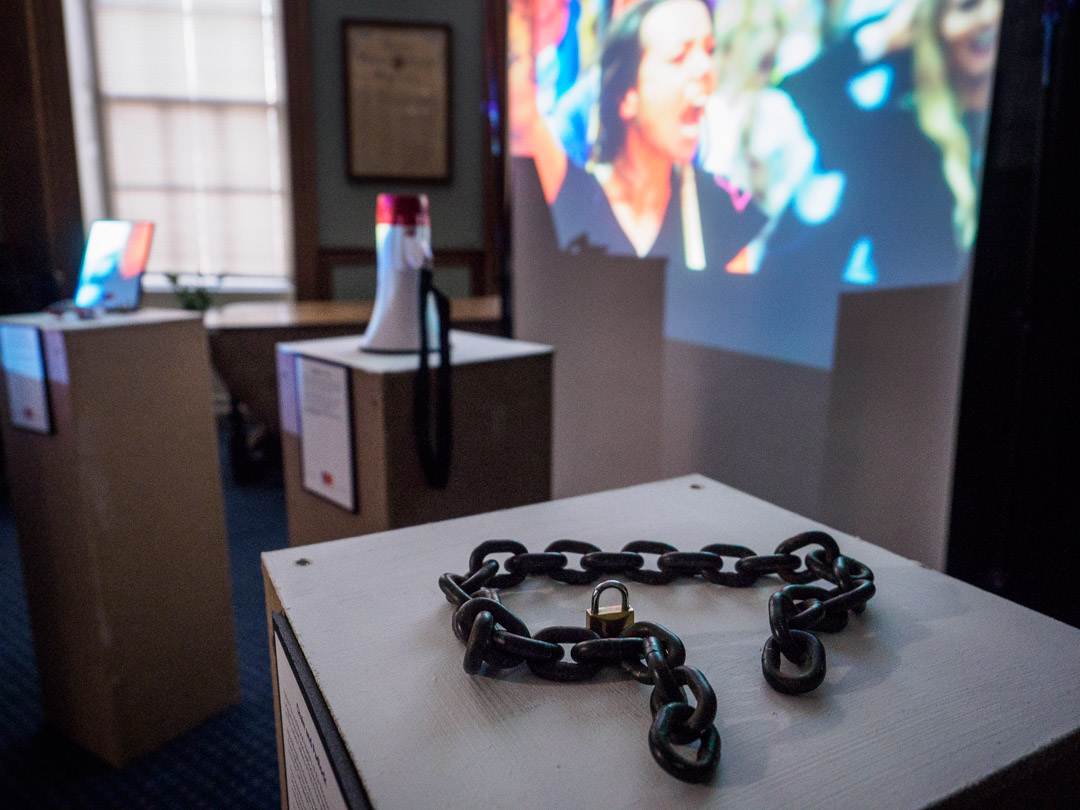A collaborative installation with Stephanie Green shown as part of the TUC event ‘Remembering struggles – Celebrating achievement – Fighting for change’ for International Women’s Day at The Guildhall, Worcester on 8 March 2025.
An installation of work which weaves together historical photography from street protests spanning over a century, from the 1912 suffragette movement to contemporary demonstrations. The installation juxtaposes this historical perspective with an examination of recent updates to the Right to Protest and the Public Order Act 2023, which significantly limits protest. At its core, the piece interrogates the impact of these restrictions, posing the question: ‘How can we ever achieve equality if our voices are silenced?’
The Right to Protest — Under Threat
The Suffragettes fought for women’s rights through protest — marching, speaking out, and using direct action. Many were arrested, beaten, and force-fed in prison. Today, the tools of protest may have evolved, but the need for resistance remains.
The Public Order Act 2023 has criminalized protest tactics used for over a century, including:
• ‘Locking on’ – attaching oneself to buildings, objects, or people to cause disruption (Section 2)
• Carrying items ‘intended’ for locking on, such as glue, chains, or padlocks (Section 2)
• Noisy protests – police can shut down a demonstration if the noise causes ‘serious disruption’ (Section 73)
• Expanded stop-and-search powers – police can now search individuals for protest-related materials without suspicion (Section 11)
If we cannot march, chant, or stand in defiance, how can we ever create change?







